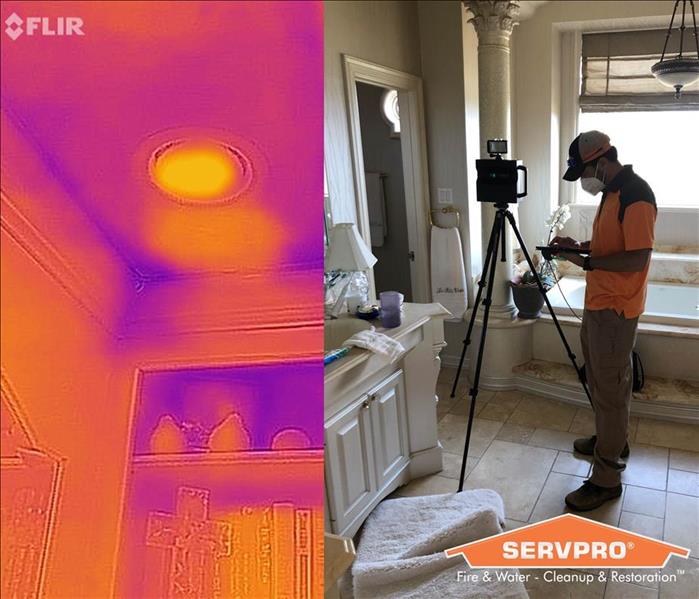How SERVPRO of Longview Can Use FLIR Cameras to Help You
8/16/2021 (Permalink)
Throughout the past century, Longview home and business owners have faced floods, forest fires, tornadoes and hurricanes. When catastrophe strikes, picking up the pieces, getting things back in order and cleaning up what is left behind can be an overwhelming task.
As water damage specialists, we have the experience, expertise, and advanced training that enables us to get your property dried quickly and thoroughly. One of the best tools our SERVPRO of Longview team uses to assess water damage situations is the FLIR Camera.
- How Does a FLIR (Infrared) Camera Work?
All objects emit infrared energy, known as a heat signature. An infrared camera (also known as a thermal imager) detects and measures the infrared energy of objects. The camera converts that infrared data into an electronic image that shows the apparent surface temperature of the object being measured.
An infrared camera contains an optical system that focuses infrared energy onto a special detector chip (sensor array) that contains thousands of detector pixels arranged in a grid.
Each pixel in the sensor array reacts to the infrared energy focused on it and produces an electronic signal. The camera processor takes the signal from each pixel and applies a mathematical calculation to it to create a color map of the apparent temperature of the object. Each temperature value is assigned a different color. The resulting matrix of colors is sent to memory and to the camera’s display as a temperature picture (thermal image) of that object.
Many infrared cameras also include a visible light camera that automatically captures a standard digital image with each pull of the trigger. By blending these images it is easier to correlate problem areas in your infrared image with the actual equipment or area you are inspecting.
Info from: https://www.fluke.com/en-us/learn/blog/thermal-imaging/how-infrared-cameras-work
- How Does SERVPRO of Longview Use FLIR Imaging?
After a water damage incident, it can be difficult to see just how much area the water has affected with the naked eye. However, with a FLIR camera we can track moisture efficiently. Using the FLIR to detect subtle temperature differences, we then use a moisture meter and locate exactly where the damage is. These handheld tools are an incredible addition to keep the remediation process fast and efficient.





 24/7 Emergency Service
24/7 Emergency Service
